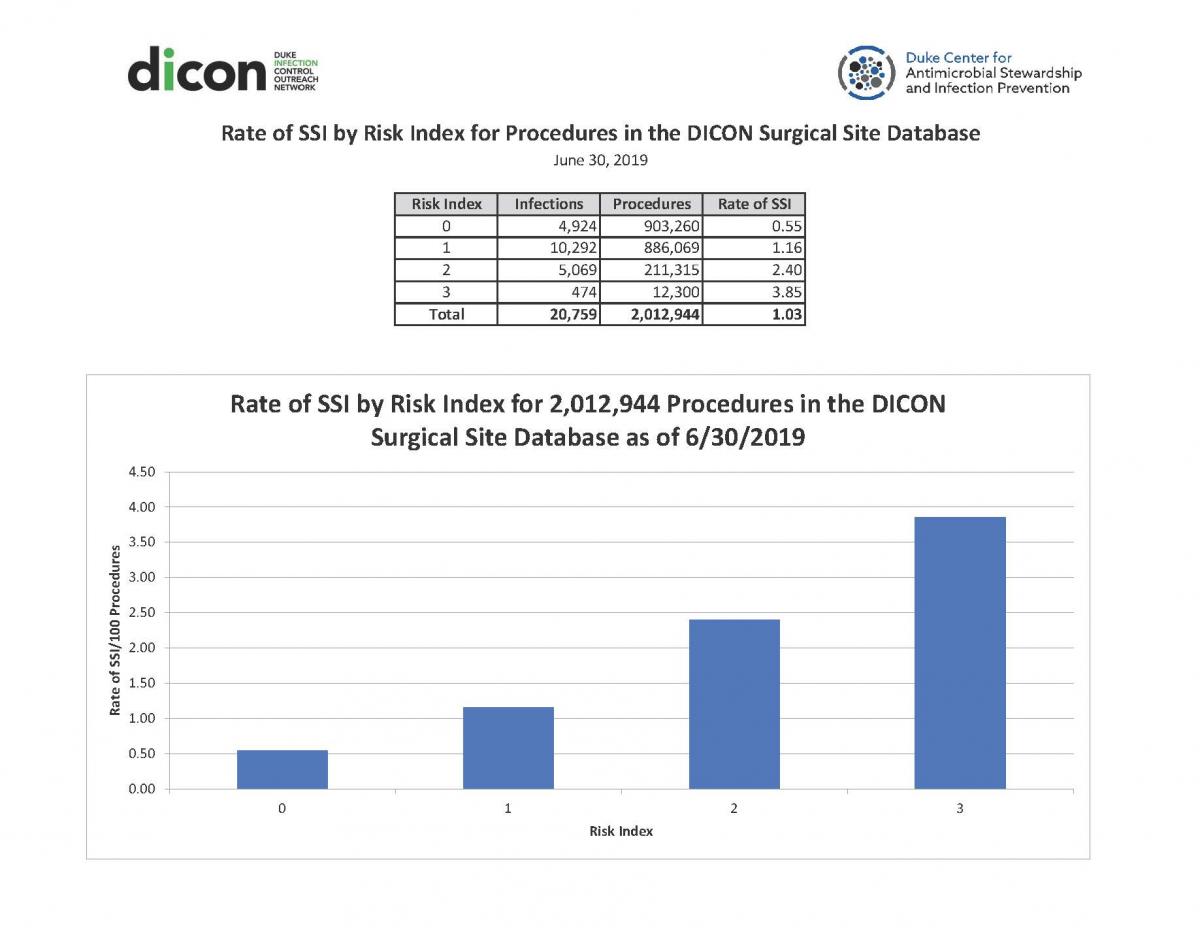DICON collects relevant meaningful data on rates of surgical site infections (SSI) at each hospital for each of the procedure that are currently included in the DICON SSI Database (see attached listing of the DICON SSI Database Surgical Procedures). As part of the contract with hospitals and surgery centers, DICON installs software that will perform multiple functions including the automated calculation of surgeon-specific, procedure-specific, risk-adjusted rates of post-operative surgical site infections and the generation of letters and reports for individual surgeons.
The DICON databases are a powerful tool that provides DICON hospitals with time-trended intra- and inter-hospital benchmarking data. This data is provided to hospitals in easy-to-view graphical formats that allow administrators and medical staff members to see quick snapshots of trends at their facilities. The data also shows how they compare to other DICON hospitals (e.g. while keeping individual hospitals' information confidential and following all current HIPAA regulations). – allowing their hospital to benchmark reductions in nosocomial infection rates against community hospitals of similar size.
DICON member hospitals electronically upload data monthly to two central databases installed at the local hospital using standardized and validated definitions. The DICON databases contain:
- over 20 years of data from some member hospitals
- >30.6 million patient days
- >1,960,000 total surgical procedures
- >20,000 total SSI
- >81,000 admissions involving infection or colonization with MRSA
All rates of SSI are risk-adjusted using the NHSN risk index. This index is a useful and widely accepted assessment of the preoperative risk for a postoperative surgical site infection. Patients with risk indices of 0 and 1 have the lowest preoperative risk of infection. The utility of this NHSN index in risk adjustment is illustrated in Figure 1 which summarizes the outcome of patients undergoing surgery in DICON member hospitals.

